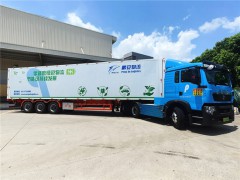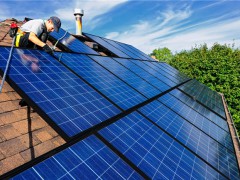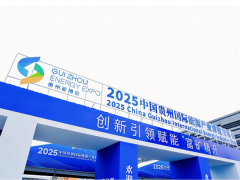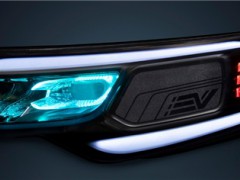隨著非傳統電動汽車制造商計劃進軍美國市場,美國市場對電動汽車(EV)生產商的吸引力越來越大。十年前,當人們想到電動汽車時,腦海中會浮現一個名字。幾年過去了,消費者有大量的電動汽車選擇,每年都有更多的電動汽車進入市場。在許多汽車制造商競相開發具有競爭力的未來汽車之際,從福特(Ford)到通用汽車(GM)等主要汽車制造商已推出電動汽車系列,以應對越來越大的脫碳壓力。今年早些時候,美國突破了大規模采用電動汽車的臨界點,5%的新車是純電動的。根據彭博社的一項分析,達到這一門檻標志著電動汽車開始大規模采用。2022年初,美國成為僅次于歐洲和亞洲的第三大電動汽車市場。基于這一成就,到2025年,美國四分之一的汽車銷售將是全電動的,比最初的預測提前了一年。過去,人們曾用各種閾值作為電視和手機等流行電子產品的預測指標,早期采用者階段耗時最長,隨后在達到閾值后迅速轉變為主流。加拿大、澳大利亞和西班牙都有望在今年達到5%的采用率。
美國電動汽車市場增長迅速,預計將從2021年的282.4億美元增長到2028年的1374.3億美元,年復合增長率為25.4%。2020年,該行業受到全球大流行的沉重打擊,但已迅速反彈。這在很大程度上是由于在國內和國際層面上,隨著充電基礎設施的發展和電動汽車更具競爭力的定價,消費者和汽車制造商正在從內燃機汽車(ICE)轉向電動汽車,碳排放的壓力越來越大。
美國現在是全球第三大電動汽車制造商。在疫情期間暫停推出新電動汽車車型的幾家汽車制造商現在終于看到供應鏈中斷的情況有所改善,使得各種各樣的汽車制造商今年得以進入電動汽車市場。電動汽車市場的這一浪潮得到了熱切的消費者的響應,通用汽車(General Motor) 2022年電動汽車悍馬(hummer)的預售在10分鐘內售罄。福特還將全電動F-150的產量提高了50%,以應對不斷增長的消費者需求。
汽車制造商正在迅速增加新的電動汽車車型,一些制造商的目標是在五年內實現全電動化。預計到2024年底,將有數十輛全電動汽車上市,這將創造一個價格和汽車功能極具競爭力的多元化電動汽車市場。《消費者報告》汽車測試中心副主任Gabe Shenhar解釋說:“這些更實惠的車型有可能憑借其效率、性能和更低的購買成本,吸引相當一部分購車者購買電動汽車。”
一些在電動汽車業務上并不知名的汽車制造商正迅速崛起,成為主要的電池-電動汽車廠商,并推出了大量新車型。本田(Honda)本月宣布,計劃與索尼(Sony)合作,將其索尼-本田(Sony-Honda)電動汽車合資企業引入美國市場。合作伙伴預計在2026年之前向美國和日本交付他們的電動汽車。索尼本田移動(SHM)希望在2025年接受預訂,主要專注于在線銷售。該公司將在北美的本田工廠生產這些汽車,并將在整個系列中提供三級自動駕駛系統。
這將有助于它與通用汽車、福特汽車和梅賽德斯-奔馳等公司競爭,這些公司也在其車輛中提供自動駕駛系統。
本田今年4月宣布,計劃在2020年之前向全球市場推出30款電動汽車。當時,該公司表示將在電氣化和軟件技術領域投資339億美元。索尼在電動汽車領域基本不為人知,它在拉斯維加斯2020年消費電子展(CES 2020)的新聞發布會上展示了一款電動汽車原型車,之后就很少有人知道了。不過,索尼預計將增強本田的電動汽車軟件系統,以提供娛樂和其他按月收費的服務。SHM希望它的汽車能像“滾動的智能手機”一樣發揮作用,盡管它還沒有公布價格或電池續航時間的信息。
到目前為止,特斯拉仍然主導著美國電動汽車市場,但福特、現代、起亞、日產和雪佛蘭等其他公司正在慢慢趕上。雖然特斯拉可能是最知名的電動汽車,但其他正在開發電動汽車系列的公司可能對這家電動汽車巨頭具有競爭優勢,因為它們計劃在未來兩到五年內向消費者提供更實惠、續航時間更長的電動汽車。
壽琳玲 編譯自 今日油價
原文如下:
U.S.EV Market Set To Grow By 390% By 2028
The U.S. market is looking increasingly attractive for electric vehicle (EV) producers, as non-traditional EV manufacturers make plans to break into the market. A decade ago, when people thought of EVs one name came to mind. Fast-forward a few years and consumers have a vast array of EV options, with more coming to the market every year. Major automakers from Ford to GM have launched EV ranges, in a bid to respond to mounting pressures to decarbonise, as many car manufacturers race to develop the competitive car of the future. The U.S. crossed the tipping point for EV mass adoption earlier this year when 5 percent of all new car sales were fully electric. Hitting this threshold marked the beginning of mass EV adoption according to a Bloomberg analysis. At the beginning of 2022, the U.S. became the third biggest EV market after Europe and Asia. based on this achievement, a quarter of U.S. car sales could be all-electric by as soon as 2025, a year earlier than originally predicted. Various thresholds have been used as predictors for popular electronics such as televisions and mobile phones in the past, with the early-adopter phase taking the longest, followed by a quick shift to becoming mainstream after hitting the threshold. Canada, Australia, and Spain are all expected to achieve the 5 percent adoption mark this year.
The U.S. EV market has expanded rapidly and is expected to grow from $28.24 billion in 2021 to $137.43 billion in 2028 at a CAGR of 25.4 percent. The industry was hit hard by the global pandemic in 2020 but has rebounded rapidly. This is largely owing to increasing pressures to decarbonise at the national and international level, with consumers and automakers making the switch from internal combustion engine (ICE) vehicles to electric in line with charging infrastructure developments and more competitive EV pricing.
The U.S. is now the third-largest EV manufacturer worldwide. Several automakers that put the launch of new EV models on hold during the pandemic are now finally seeing an improvement in supply chain disruptions, allowing a wide variety of car makers to break into the EV market this year. This flood of the EV market has been met by eager consumers, with General Motor’s (GM) 2022 EV hummer pre-order selling out in 10 minutes. Ford has also increased its output of the fully electric F-150 by 50 percent in response to rising consumer demand.
And automakers are quickly adding new EV models to their ranges, with several manufacturers aiming for fully-electrified fleets within half a decade. Dozens of all-electric vehicles are expected to launch by the end of 2024, creating a diverse EV market with highly competitive pricing and car features. Gabe Shenhar, associate director of Consumer Reports’ Auto Test Center explained, “These more affordable models have the potential to sway a significant percentage of the car-buying public toward buying an EV with their efficiency, performance, and lower ownership costs.”
And several automakers unknown for their EV business are emerging quickly as major battery-electric playerswith extensive new ranges set for market. Honda announced this month that it plans to partner with Sony to bring its Sony-Honda EV venture to the U.S. market. The partners expect to deliver their EVs to both the U.S. and Japan by 2026. Sony Honda Mobility (SHM) hopes to take pre-orders in 2025, focusing mainly on online sales. It will manufacture the vehicles at a Honda factory in North America and will offer a Level 3 autonomous driving system across the range.
This will help it compete with companies such as Tesla, General Motors, Ford Motor Co., and Mercedes Benz which are also offering autonomous driving systems in their vehicles.
The new venture builds upon Honda’s April announcement that its plans to deliver 30 EV models to the global market by the end of the decade. At the time, it said it would be investing $33.9 billion in electrification and software technologies. Sony is largely unknown in the EV world, presenting a prototype electric car at a press event during CES 2020 in Las Vegas, and little since. However, Sony is expected to enhance Honda’s EV software system to provide entertainment and other services that will be billed monthly. SHM hopes its vehicle will function like a ‘rolling smartphone’, although it has not yet released information about the price or battery range.
To date, Tesla is still dominating the U.S. EV market, but other companies such as Ford, Hyundai, Kia, Nissan, and Chevrolet are slowly catching up. While Tesla might be the most well-known EV, other companies developing their EV ranges may have a competitive edge over the electric car giant, as they plan to offer consumers more affordable and longer-range EVs within the next two to five years.
免責聲明:本網轉載自其它媒體的文章及圖片,目的在于弘揚石化精神,傳遞更多石化信息,宣傳國家石化產業政策,展示國家石化產業形象,參與國際石化產業輿論競爭,提高國際石化產業話語權,并不代表本網贊同其觀點和對其真實性負責,在此我們謹向原作者和原媒體致以崇高敬意。如果您認為本站文章及圖片侵犯了您的版權,請與我們聯系,我們將第一時間刪除。







